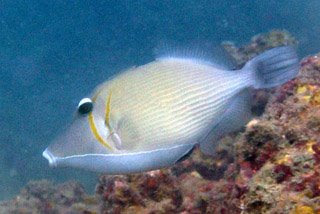From Ruth:
I have now been in Andavadoaka working for Blue Ventures for 7 months. I’ve been ‘fish enabled’ for about 5 of those months, and am out there doing fish point outs and tests with volunteers during their training period, and collecting data towards the end of the expedition.
 In order to be science enabled I had to get 98% on my in-water and computer fish ID tests. With 150 fish to learn, it was quite daunting initially and took me quite a while before I was confident in the water to know what I was seeing. The most amazing thing about this is that 5 months on, I still get a thrill when I’m diving and I can identify the majority of the fish that I’m seeing on a dive. I love it when one of our 150 fish shows up on a dive if I haven’t seen it for a while. I saw a scythe triggerfish today and greeted it like an old friend because it’s been months since I saw one. I felt so happy that I saw it, and instantly knew what it was. I have Tristan (one of our field scientists) to thank for this, as his training was rigorous and, at times, relentless. But it was all worth it.
In order to be science enabled I had to get 98% on my in-water and computer fish ID tests. With 150 fish to learn, it was quite daunting initially and took me quite a while before I was confident in the water to know what I was seeing. The most amazing thing about this is that 5 months on, I still get a thrill when I’m diving and I can identify the majority of the fish that I’m seeing on a dive. I love it when one of our 150 fish shows up on a dive if I haven’t seen it for a while. I saw a scythe triggerfish today and greeted it like an old friend because it’s been months since I saw one. I felt so happy that I saw it, and instantly knew what it was. I have Tristan (one of our field scientists) to thank for this, as his training was rigorous and, at times, relentless. But it was all worth it.
But being able to identify fish on site is not the most amazing thing about diving here. It’s the fact that there’s more fish out there that I don’t know. Last week, I had a fantastic dive on one of our near shore sites and was so excited by the new fish that I’d never seen before, that I had to rush back, go to our fish ID books, and work out what they were. It was a great feeling to identify them, and know that in over 400 dives (not just here!), it’s possible that I’ve never positively identified those fish before – possibly never even seen at least one of them before. Just in case you’re interested, they were: a yellowsaddle goatfish, a blackedge thicklip wrasse and a sunset wrasse. I’m sure that no matter how many fish I learn, I’ll never lose the thrill of coming back from a dive with a new fish to identify, look up and write into my log book.

